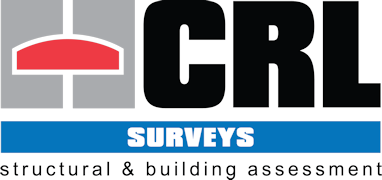From experience, this type of inspection is usually undertaken 'at the eleventh hour', with contracts ready to be exchanged. We will often be working within /on an unfamiliar structure, which is occupied or at least still 'fitted-out', where we have not been afforded the opportunity of a preliminary site visit and we do not have detailed 'as-built' drawings.
The type of inspection envisaged would generally be equitable with an asbestos Management Survey, formerly a combined Type 1 - Location and assessment survey (presumptive survey) and a Type 2 - Standard sampling, identification and assessment survey (sampling survey).
Consequently, as far as reasonably practicable, we will inspect areas of exposed structure and will prepare and analyse representative samples from the elements we can both see and access, e.g. above false ceilings and inside risers, service ducts, lift shafts etc. In this case the presumption will be that the remainder of the structure, i.e. those areas not visible (hidden behind internal finishes etc.) are the same as those that are visible. We cannot guarantee that there are no hidden structural elements, or forms of construction, differing significantly in composition from those visible and accessible.
If the structure is to be refurbished, or subjected to major alteration, repair or maintenance we would recommend that the above inspection should subsequently be augmented with a more detailed survey, involving a desk study of all available 'as-built' drawings and other information, together with a site inspection generally equitable with an asbestos Refurbishment / Demolition Survey, formerly a Type 3 Full access, sampling and identification survey (pre-demolition / major refurbishment survey).
In many instances, the principal aim of the inspection is for the identification of High Alumina Cement Concrete (HACC). Consequently, the date of construction is an important factor to be considered. High Alumina Cement (HAC) was extensively used in the UK, for structural concrete applications, between the 1950's and early 1970's, mainly for the manufacture of pre-cast, pre-stressed beams, but also for some in-situ cast, reinforced concrete, applications. The design codes possibly applicable include CP114, CP115, CP2007: Part 2, CP116, CP110, Technical Memorandum (Bridges) BE 1/73, Technical Memorandum (Bridges) BE 2/73, BS 5337, BS 5400, BS 6349 and BS 8110. Although the problems with HACC were researched and well documented it was not until CP110 was replaced by BS 8110, in 1985, that HACC was deleted from the design code for the structural use of concrete. It should also be noted that pre-1950's structures could have been altered, re-modelled or repaired using HACC components, e.g. structures repaired following bomb damage during the 1940's, 1970's and 1980's.
If we are working within occupied or 'fitted-out' premises all internal finishes, fixtures, fittings, furniture, office equipment (computers, printers etc.) and personal items etc. will need to be cleared away or otherwise protected, by others, prior to commencement of our works. We will not accept liability for any loss or damage, where such items have not been cleared away or adequately protected. In some circumstances we may require our Team escorted at all times during the site work, to avoid potential disputes.
At sampling and test locations we will make-good the holes and breakouts arising only to the original 'structural' surfaces, i.e. unless specifically requested, in writing prior to commencement of the works we will not undertake any re-decoration, re-instatement of surface finishes or decor.
We MUST be provided, prior to commencement on site, with an up to date copy of the Asbestos Register, for at least the areas to be inspected. We will not disturb either registered materials or other, unregistered, suspected asbestos containing materials. For occurrences of the latter we will notify our Customer contact of our suspicions as soon as reasonably practicable.



